……… 5 – 4 – 3 – 2 – 1 – Blast Off! Just like sending a space rocket up, launching a pattern is an absolute eon of effort for a few seconds of glory!
I published my very first “proper” pattern during the summer of 2020. My second in the winter of that year. This is only my third. I say “Only”, but actually it is a massive achievement! I published “Going Underground” on 1st October. It had been a fair while coming. Launching a pattern is not a quick game!
First of all there’s the idea. The idea came from looking at a book, Mr Beck’s Underground Map by Ken Garland. It has been on my bookshelf for many years. I recall trips my partner and I took to Stanfords in London – looking at maps, books of maps, all sorts of things map related, and this book had been one of his. It was published in association with The London Transport Museum in 1994. Sadly it is no longer in print.
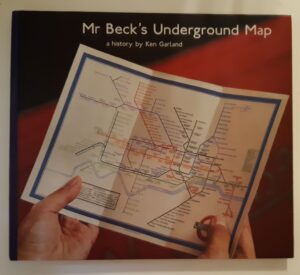
Book – Mr Beck’s Underground Map
It tells the story of Henry C Beck (Harry to his friends). He first suggested an easy-to-follow diagrammatic method of mapping the London Underground system way back in 1931. The book is full of diagrams from the early 1900s to the 1960s. They show how the Underground grew and developed and illustrate the challenges of recording such a complex beast in an easily understandable format.
Beck joined the Signal Engineer’s Office of the Underground Railway in 1925 as a junior draughtsman. When he produced his first diagram in 1931 he was no longer employed there. However the workload of the drawing section was such that he was later re-appointed. The original maps published from the early 1900s were more geographical in nature, following the contours and directions of the routes. Beck instead created a design that simplified the route lines so that they showed up as verticals, horizontals and diagonals. He removed cartographic elements such as parks etc though the River Thames remained, albeit in the same stylised form as the route lines. Interchanges and terminuses (or should that be termini?) were shown as dots or circles.
He submitted his diagram to the Publicity department …. and they said no! But he didn’t give up. He resubmitted it the following year, and thus the London Underground Diagram was born.
I am sorry not to be able to show you pictures, but – copyright, you know!
Almost 90 years later and I was sketching out an idea for a quilt! The original idea was a bit messy – I had put the Central line going through the middle and it just didn’t work. I reminded myself to Keep it Simple, Sweetie – KISS!

“Back of the envelope” rough sketch
The next step was to transfer the idea into my Electric Quilt program, EQ8. This is a program I use for designing all my quilts. It is jolly clever! I can add in specific blocks and fabrics, design my own blocks, scan in my own fabrics. However, I often have to remind myself that just because I CAN design something, it doesn’t mean I SHOULD! Designs don’t always translate to real life. My first iteration of the design would have generated some very peculiar piecing – Y-seams, funny little spacer blocks – so back to the KISS principle – I simplified the design, made all the curved blocks the same size, and generally tidied things up.
Following that, I had to go to a different suite of programs to write the instructions and draw out all the diagrams. One little sentence here, but let me tell you, it took an age!!
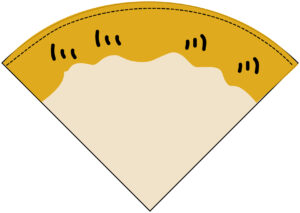
quarter and arc Piecing diagram for pattern
I checked the pattern for clarity, obvious errors and general grammatical issues before I carefully followed my own instructions to make up the first sample (and see if there were any glaring mistakes in there!) In many respects at this point, the challenge is to follow the pattern exactly as written, and not make any assumptions or adjustments along the way. The pattern then goes out to other pattern testers to see what they make of it.
Eventually I make the “proper” quilt, with backing, quilting and binding – and even a hanging sleeve and label if you are lucky. Going Underground is still waiting on its hanging sleeve and label!

Lots of quilting threads to darn in
The next stage is photography. Particularly in these socially distanced days, photography is something I am trying to do myself. Though I would much rather get someone else who knows what they are doing to deal with it. I took a range of photographs in a very pleasant location. Some with my smartphone, but mostly with the proper, grown-up camera I bought earlier in the year (and am still trying to learn how to use!) And then to select the best and drop them into the pattern itself.
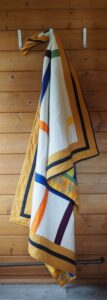
Arty shot!
I got another friend to review the final document (Thank you, Elaine) and made some last minute changes. And then it was ready to save as a pdf and load onto my selling platform.
I hope that you like this pattern, Going Underground, and enjoyed reading a little bit about what goes in to creating patterns. And if you fancy your own copy, you can buy it here!
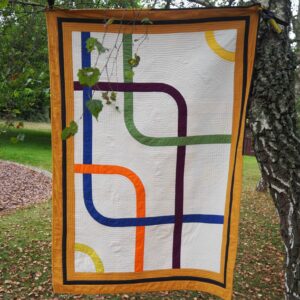
Going Underground Modern Quilt
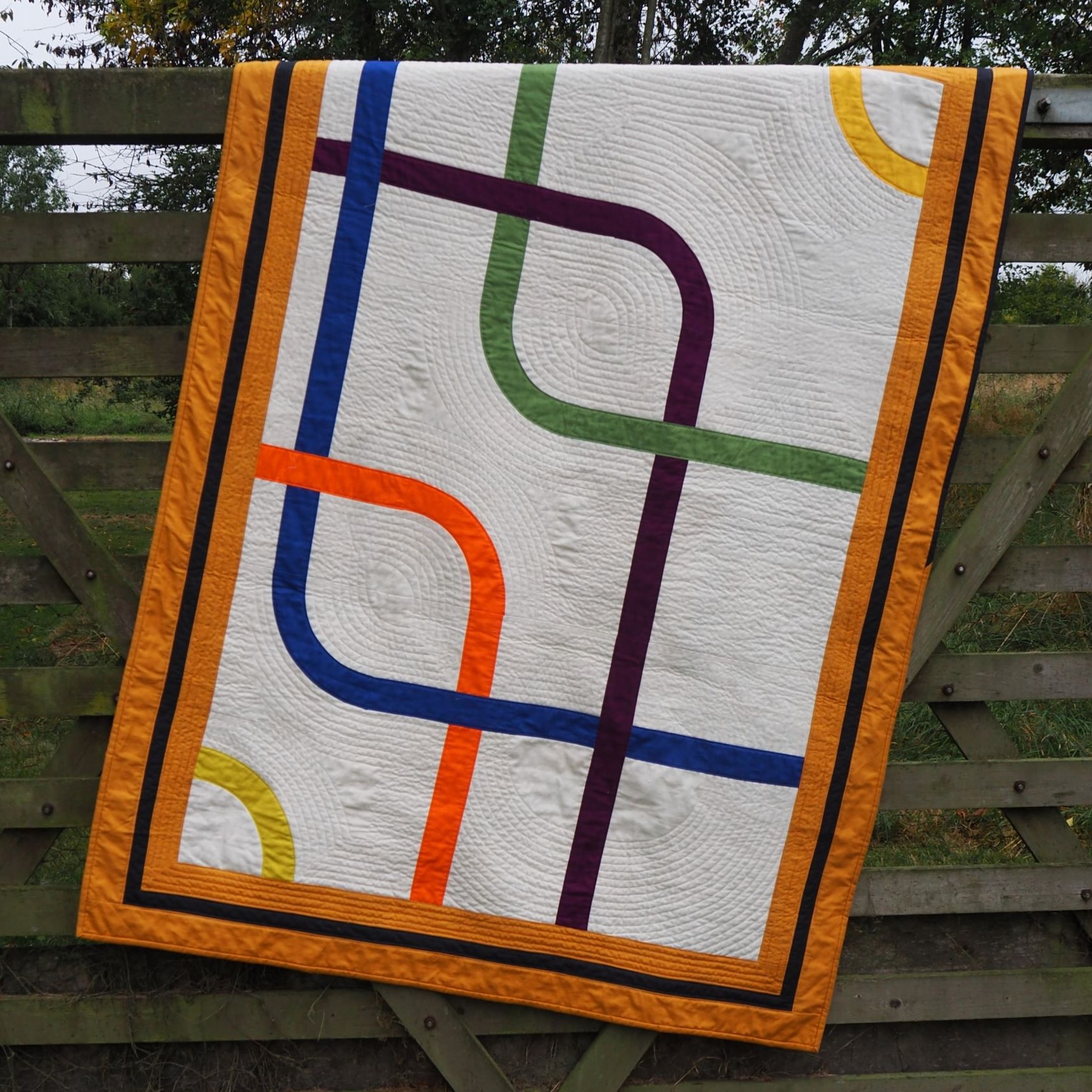
I love your quilt Sheena, not only does it have the underground vibe, it also has a 1930s vibe to me, even for a modern quilt. I hope this.quilt does really well for you.